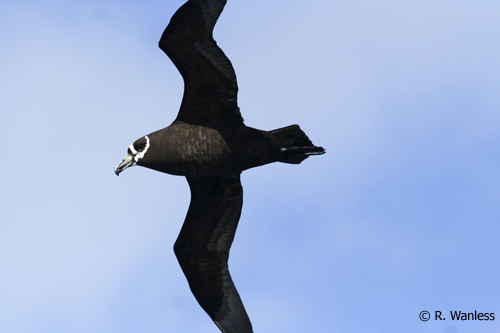Y.-M. Yeh (Department of Tourism Management, Nanhua University, Chiayi, Taiwan) and colleagues, writing in the journal Animal Conservation, report on seabird bycatch by Taiwanese pelagic longline fisheries in the South Atlantic Ocean between 2004 and 2008.
"The mortality of seabirds in fisheries has had a serious negative impact on many seabird populations, yet the extent of fishery-derived seabird mortality in pelagic longline fisheries, remains poorly understood. In this study, we analyze fishing effort and catch data of the Taiwanese distant-water longline tuna fleet - the largest fleet in the Atlantic Ocean. These data collected by fishery observers over a 5-year span include 61 trips involving 6181 observed sets of over 20 million hooks, where 198 seabirds were caught (23 of which were released alive). Most birds were caught in the South Atlantic, with estimated seabird bycatch rates ranging from 0.026 birds per thousand hooks in the southwest Atlantic to 0.063 birds per thousand hooks in the southeast Atlantic. Black-browed, Atlantic yellow-nosed, and wandering albatrosses, as well as spectacled and southern giant petrels, were the most frequently caught species. Seabird bycatch hotspots were identified at 20°-40°S/10°W-15°E and 35°-45°S/45°-55°W. In the South Atlantic Ocean, generalized additive models indicated that fishing location and the number of birds sighted significantly influenced seabird bycatch rates. Extrapolating these spatially and temporally explicit seabird bycatch rates to the fishing effort data of other distant-water longline fleets and extrapolating the bycatch rates reported in the literature to the reported fishing effort of coastal nation fleets, we estimate the total seabird incidental mortality from pelagic longline fishing in the southern Atlantic Ocean to be between 3446 and 6083 birds per year from 2004 to 2008. These findings support proposals calling for the required use of best-practice mitigation measures by all pelagic longline vessels operating in seabird bycatch hotspots in the South Atlantic Ocean. International cooperation on research and data sharing is critical to ensure the sustainability of seabird populations and fisheries."

Spectacled Petrel in the South Atlantic. Photograph by Ross Wanless
Reference:
Yeh, Y.-M., Huang, H.-W., Dietrich, K.S. & Melvin, E. 2012. Estimates of seabird incidental catch by pelagic longline fisheries in the South Atlantic Ocean. Animal Conservation. DOI: 10.1111/j.1469-1795.2012.00588.x.
For papers by Taiwanese researchers on pelagic longline mortality of albatrosses and petrels in the Indian and Pacific Oceans click here.
John Cooper, ACAP Information Officer, 26 September 2012

 English
English  Français
Français  Español
Español